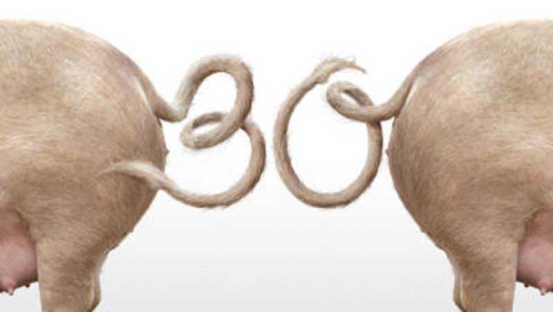
I always look forward to interactions with one of my long time clients — Mr Makumi, a pig farmer in Nyambare, Limuru near Uplands Beacon Factory. My first encounter with Makumi was during our fifth year practical ambulatory classes; when we visited his farm. Our friendship was however cemented latter in life when I brought another friend who was preparing to get into pig farming to learn a few tips; Mr Makumi has ever since consulted me on numerous occasions on issues relating to pig health.
Stinking pigsty
I got lots of interest in what Makumi was doing because pig farming is something I have been longing to venture into but one thing has always kept me from taking that first step – a spacious farm. Management of pig waste is the greatest challenge in pig farming; you will certainly get into problems with your neighbours over the stench that emanates from pig sty. This dream which is still valid to date has kept our friendship alive.
In January this year Makumi called me with a rather absurd case. He had observed an abnormal behaviour in — the weaners and growers. These two groups had about 20 pigs each out of which about ten had their tails bitten to varying degrees. Two pigs were almost tailless and seemed to be in a lot of pain by the time Makumi was calling me to intervene.
Although this is a vice we had been taught at the vet school, this was the first time I was encountering it in my practical professional life. On arriving on the farm I noticed that the two affected group of pigs were overcrowded in their sty. This isn’t a good thing for any domestic animal. The area; which is normally cold was particularly hot perhaps adding to the crowding stress.
The situation on the farm wasn’t very good; almost all the pigs in these two groups had tail bite wounds. This was going to cost Makumi dearly when selling off the stock; tail wounds aren’t good for the carcass quality. They can be infected and this can permeate the whole body resulting in lowered carcass value or outright condemnation of the carcass. Makumi was staring at an eminent loss in a year.
I isolated the affected pigs and treated them with a topical antibiotic spray and antibiotic spray to take care of any secondary bacterial infections. But that wasn’t enough; in such cases you need to investigate the cause of this vice an exercise that was a bit complex.
After close monitoring, I was able to identify one “bully” pig among the growers group which I observed severally attempting to bit others tails. But this wasn’t the root cause of the problem; Makumi had complained how feeding the pigs was a burden considering that he had just paid school fees – I knew the pigs weren’t getting enough for their stomachs another cause of stress and probably the biting.
Makumi was also dealing with a large number of pigs that were a strain to his housing capacity – they were overstocked coupled by generally high ambient temperatures at the time.
Tail biting in pigs is a serious vice that many farmers have to deal with in herds. In fact no system is immune from this vice. Pigs have a natural tendency to investigate their environment using their mouth and to chew. Red colour like happens in bleeding is a trigger to biting.
Normally the end of the tail is not as sensitive and that is how a bite isn’t noticed initially, as it progresses bleeding follows a stage that naturally attracts others to continue the biting.
This problem is common when the animal is one, seven and eight months, a period during which pigs undergo teething.
(The writer is a veterinary surgeon working with the Kenya Tsetse and Trypanosomiasis Eradication Council –KENTTEC)
Stay informed. Subscribe to our newsletter
 The Standard Group Plc is a
multi-media organization with investments in media platforms spanning newspaper
print operations, television, radio broadcasting, digital and online services. The
Standard Group is recognized as a leading multi-media house in Kenya with a key
influence in matters of national and international interest.
The Standard Group Plc is a
multi-media organization with investments in media platforms spanning newspaper
print operations, television, radio broadcasting, digital and online services. The
Standard Group is recognized as a leading multi-media house in Kenya with a key
influence in matters of national and international interest.
 The Standard Group Plc is a
multi-media organization with investments in media platforms spanning newspaper
print operations, television, radio broadcasting, digital and online services. The
Standard Group is recognized as a leading multi-media house in Kenya with a key
influence in matters of national and international interest.
The Standard Group Plc is a
multi-media organization with investments in media platforms spanning newspaper
print operations, television, radio broadcasting, digital and online services. The
Standard Group is recognized as a leading multi-media house in Kenya with a key
influence in matters of national and international interest.







